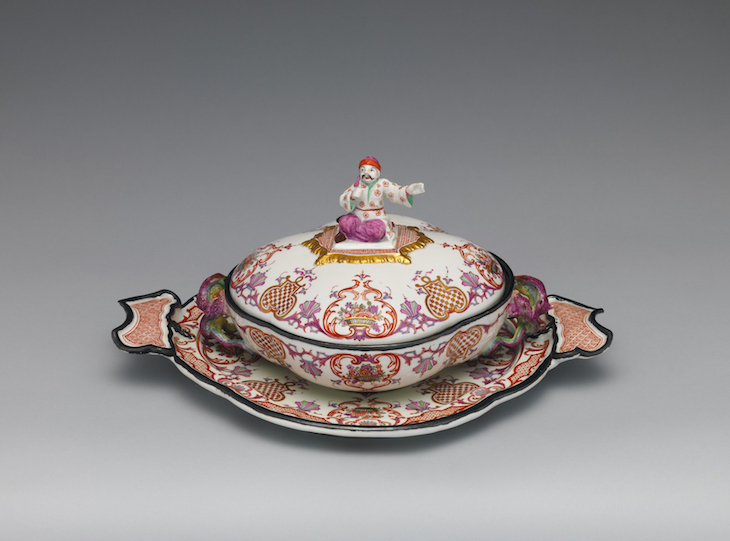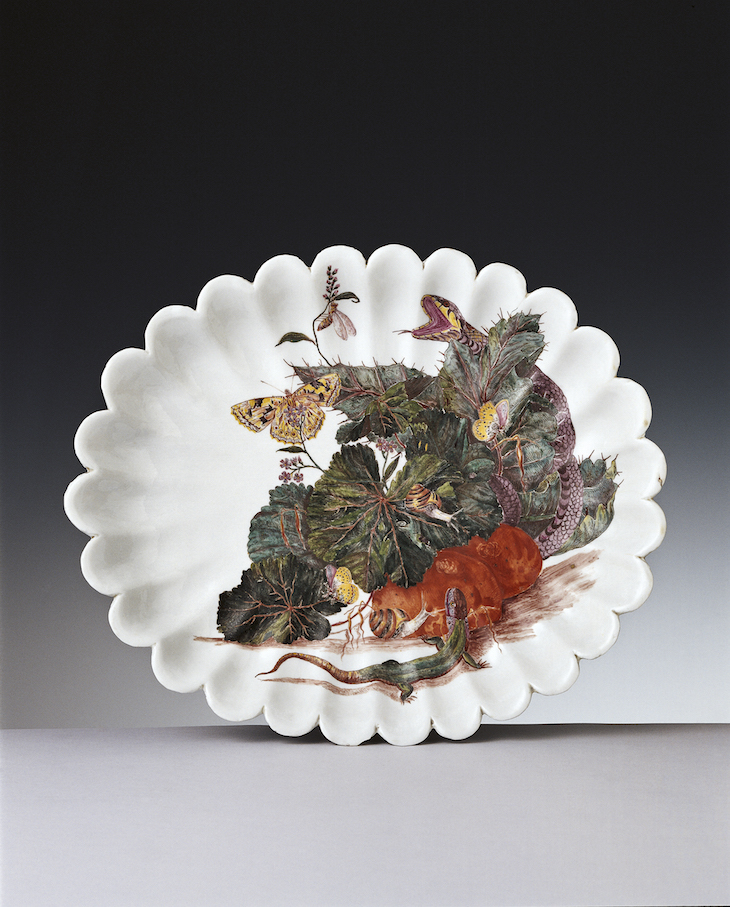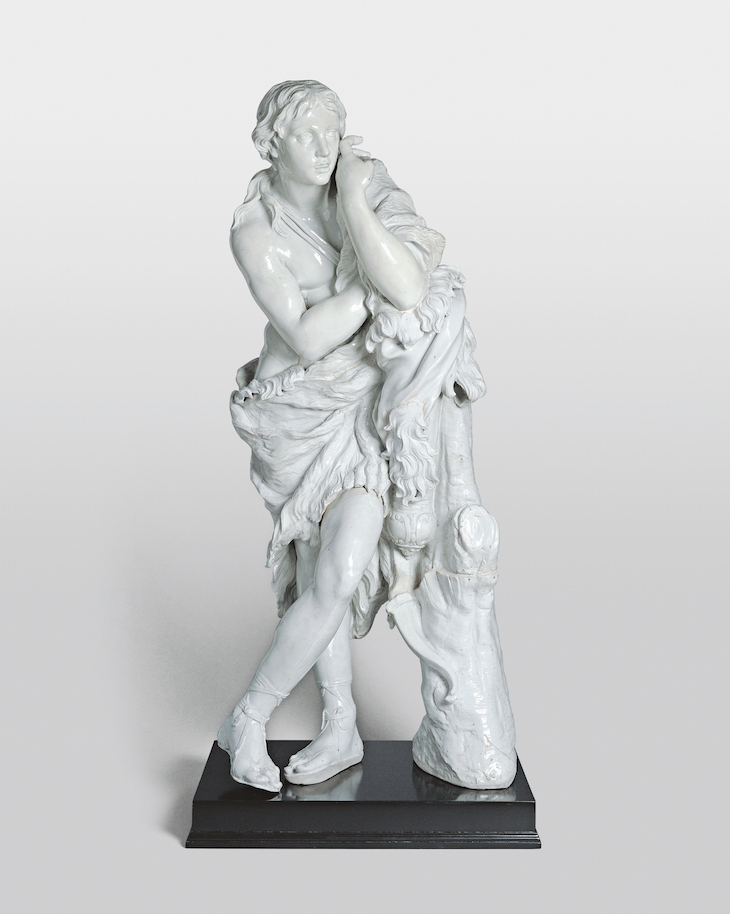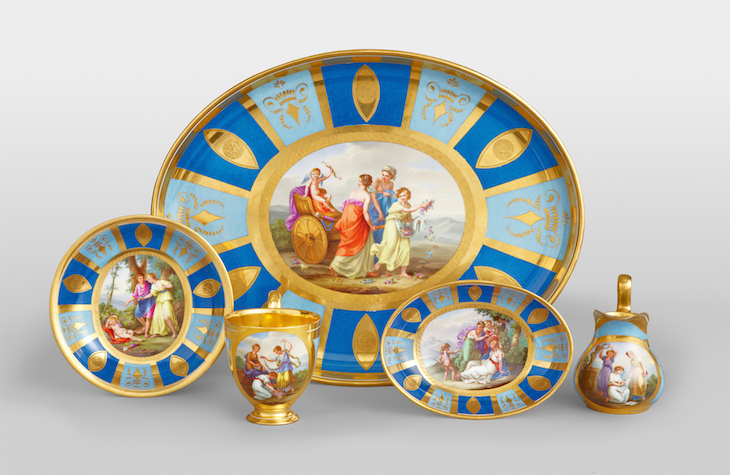The Paths of Porcelain between Vienna and Florence
When the Medici era concluded in 1737, Tuscany came under Austrian rule. New porcelain manufactories were established in both Florence and Vienna and this exhibition considers the stylistic links between the two. Find out more about ‘The Princes’ Fragile Treasures’ from the Palazzo Pitti’s website.
Preview the exhibition below | See Apollo’s Picks of the Week here

Tureen and cover with a seated oriental figure as a knob, and snake handles
(c. 1730-1735), Du Paquier Manufactory, Vienna. Metropolitan Museum of Art, New York
For many centuries, Europeans tried discover the secret of Chinese porcelain. The first manufactory, which produced soft-paste imitation wares, was set up in the 1560s by Francesco I de’ Medici – but it was another 150 years before the first hard-paste porcelain was produced in Meissen. Keenly observing Meissen’s success, the Dutchman Claude Innocentius du Paquier received an exclusive patent from Emperor Charles VI to manufacture porcelain in Vienna. With its handle of an oriental figure, sitting cross-legged on a rug, this fine Du Paquier tureen nods toward the eastern origins of the medium.

Fruit Bowl (1746), Doccia Manufactory, decorated by Anton Anreiter von Ziernfield. Museo Richard Ginori della Manifattura di Doccia, Sesto Fiorentino, Firenze
The last of the Medicis, Gian Gastone, died in 1737, bringing Tuscany under the rule of the Austrian emperor. That year, Marchese Carlo Ginori established what would become the world-famous manufactory at Doccia. He travelled to Vienna to greet the Habsburg monarchs and, on his travels, persuaded the talented Du Paquier decorator Anton Anreiter von Ziernfeld – who painted the vignette of reptiles, insects and foliage seen on this fruit bowl – to return with him to Tuscany.

Paris (1745–55), Doccia Factory (after a model by Giuseppe Piamontini). The Princely Collections, Vienna
One of Ginori’s principal ambitions was to recreate in porcelain the achievements of Florentine sculpture in bronze and marble. He employed the master modeller, Gaspero Bruschi, to take casts from works such as this depiction of Paris by the contemporary sculptor Giuseppe Piamontini; large-scale ceramic sculptures like these, of which ten survive, decorated Ginori’s private gallery.

Lunch service with mythological scenes after Angelica Kauffman (c. 1807), Imperial Porcelain Manufactory, Vienna, decorated by Claudius Herr. The Princely Collections, Vaduz, Liechtenstein
In Vienna, meanwhile, the Empress Maria Theresa was forced to rescue Du Paquier’s enterprise from financial difficulties in 1744, after which it became known as the Imperial Porcelain Manufactory. With the advent of neoclassicism in the 18th century, and the influence of the Sèvres manufactories in France, Viennese porcelain became increasingly lavish in its decoration, while considerably upping its output. This lunch service is painted with mythological scenes after the manner of Angelica Kauffman.











![Masterpiece [Re]discovery 2022. Photo: Ben Fisher Photography, courtesy of Masterpiece London](http://www.apollo-magazine.com/wp-content/uploads/2022/07/MPL2022_4263.jpg)
Why are fathers so absent from art history?